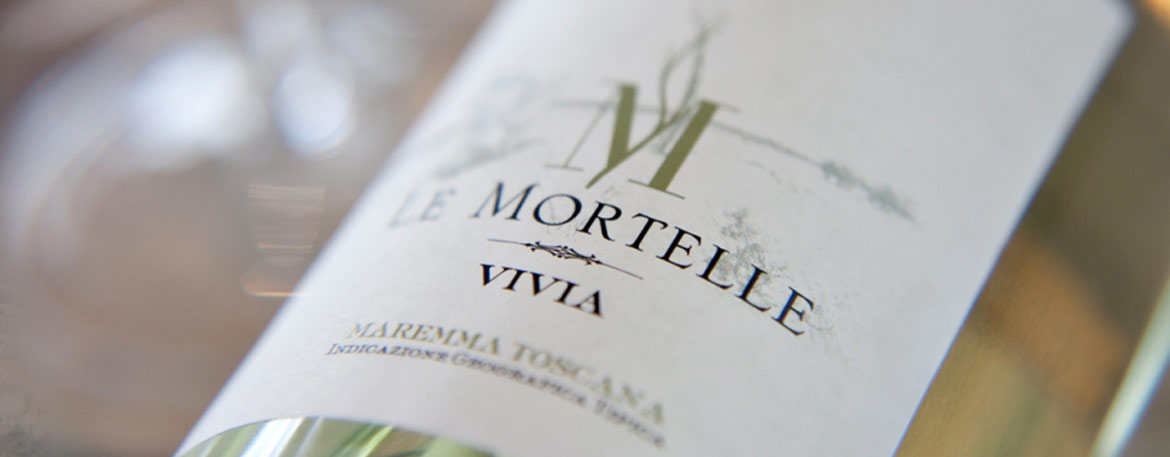Our Portfolio

Vermentino di Maremma – “Vivia” Le Mortelle
Classification IGT Maremma Toscana
Blend Vermentino, Viogner and Ansonica
Climate 2010 was characterized, on the whole, by a climate which was cooler and damper than the seasonal norm, and this – along with positive summer weather – lengthened the ripening cycle of the vine and led to a somewhat late ripening of the grapes. The three varieties which make up the blend of this wine were, accordingly, able to achieve all of their varietal character and freshness and, at the same time, maintain both good levels of acidity and a balanced level of sugar.
Vinification The grapes were harvested when they had achieved full aromatic ripeness in order to maintain the fragrance of each individual variety. A small part of the Viognier and Ansonica crop was harvested later in order to assure grapes with warmer and sweeter notes. The grapes, once in the cellars, were immediately pressed and, during this phase, their temperature was lowered to 10° centigrade (50° Fahrenheit) in order to assist a natural static settling of their impurities. The purified must then went into stainless steel fermenting tanks where it underwent a long, slow ferment at 16° centigrade (61° Fahrenheit). The finished wine aged briefly on its lees (for approximately three months) and was then given an additional three months of bottle aging before release. Alcohol: 12.5% Vol.
Historical data The Le Mortelle estate is located in the heart of the lower Tuscan Maremma, in the province of Grosseto at approximately five miles from Castiglione della Pescaia. It extends over a total of 675 acres (270 hectares), 400 of which are planted to vines, prevalently Cabernet Sauvignon and Sangiovese along with – more recently – such white grape varieties as Vermentino, Ansonica, and Viognier. The property was purchased in 1999 by the Antinori family, convinced as it was that the area had an important potential for high quality wine production. The new Le Mortelle cellars are largely underground in order to minimize to the maximum possible extent the visual impact on the environment. It was constructed in order to best exploit the natural thermal regulation offered by the rocks in the sub-soil and with a maximum respect for preserving and maintaining natural balances: energy savings due to gravity-flow winemaking procedures, plant-purification (phyto-purification) of the cellar water which is then returned to the environment, and the use solely of energy provided by renewable sources. The estate is open – with advance notice and reservations – to the public for guided tours with tastings, and visitors can acquire both the estate’s wines and the fruit grown on the property.
Tasting notes The wine shows intense aromas of peach, citrus zest, and candied fruit. It is soft on the palate but is well sustained by a crisp acidity which adds to its savor and length.


